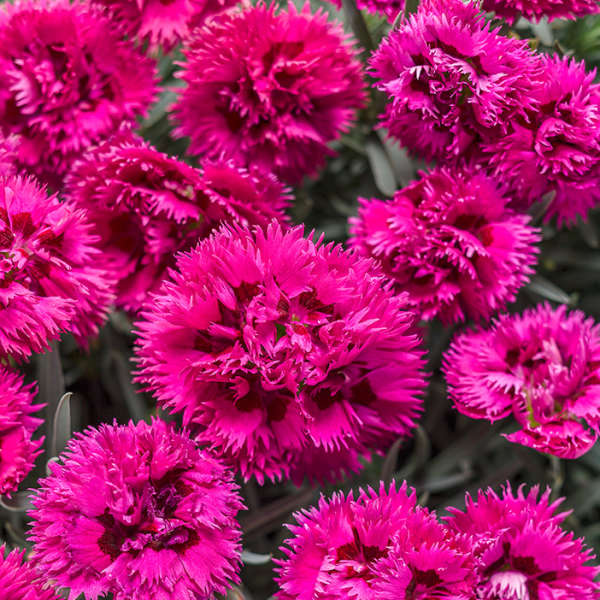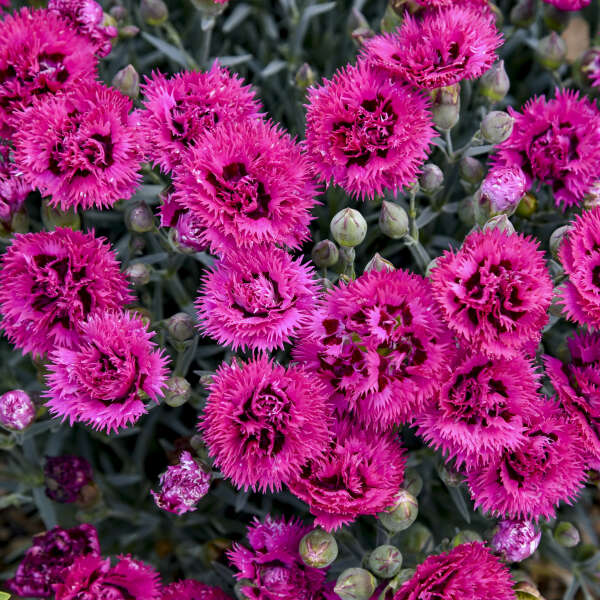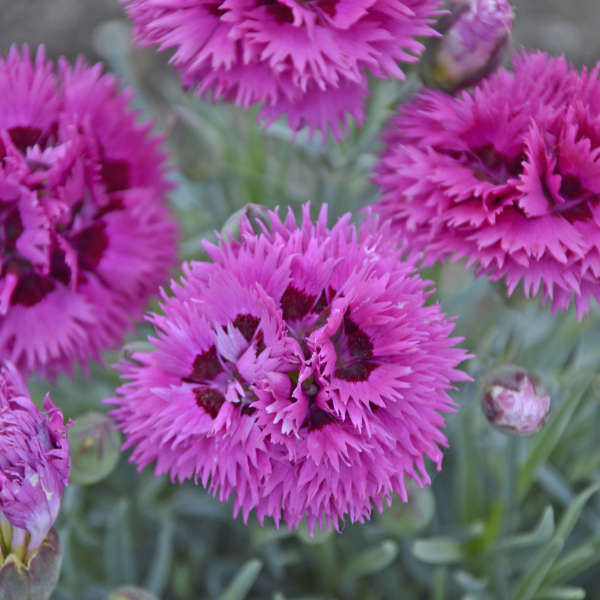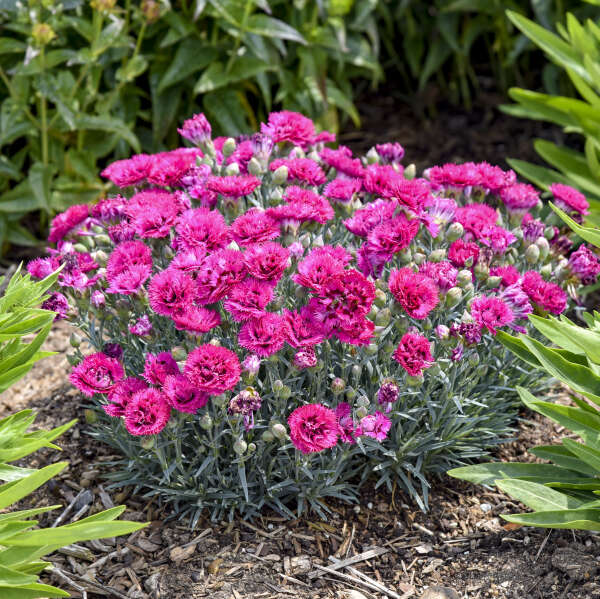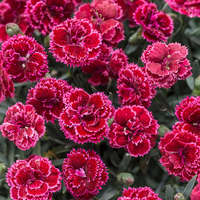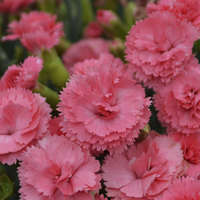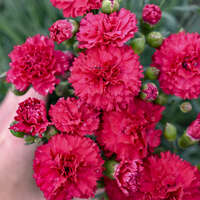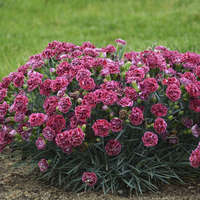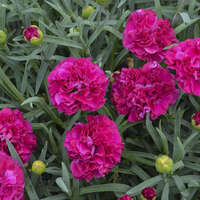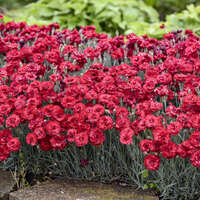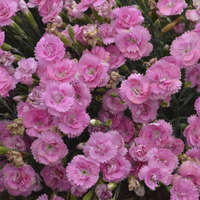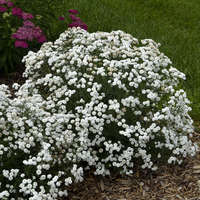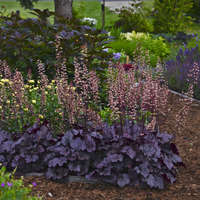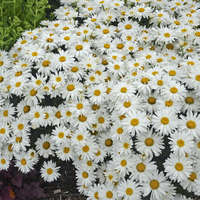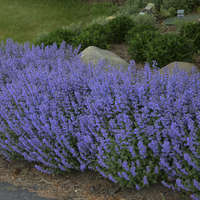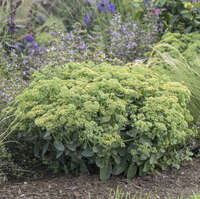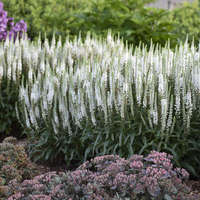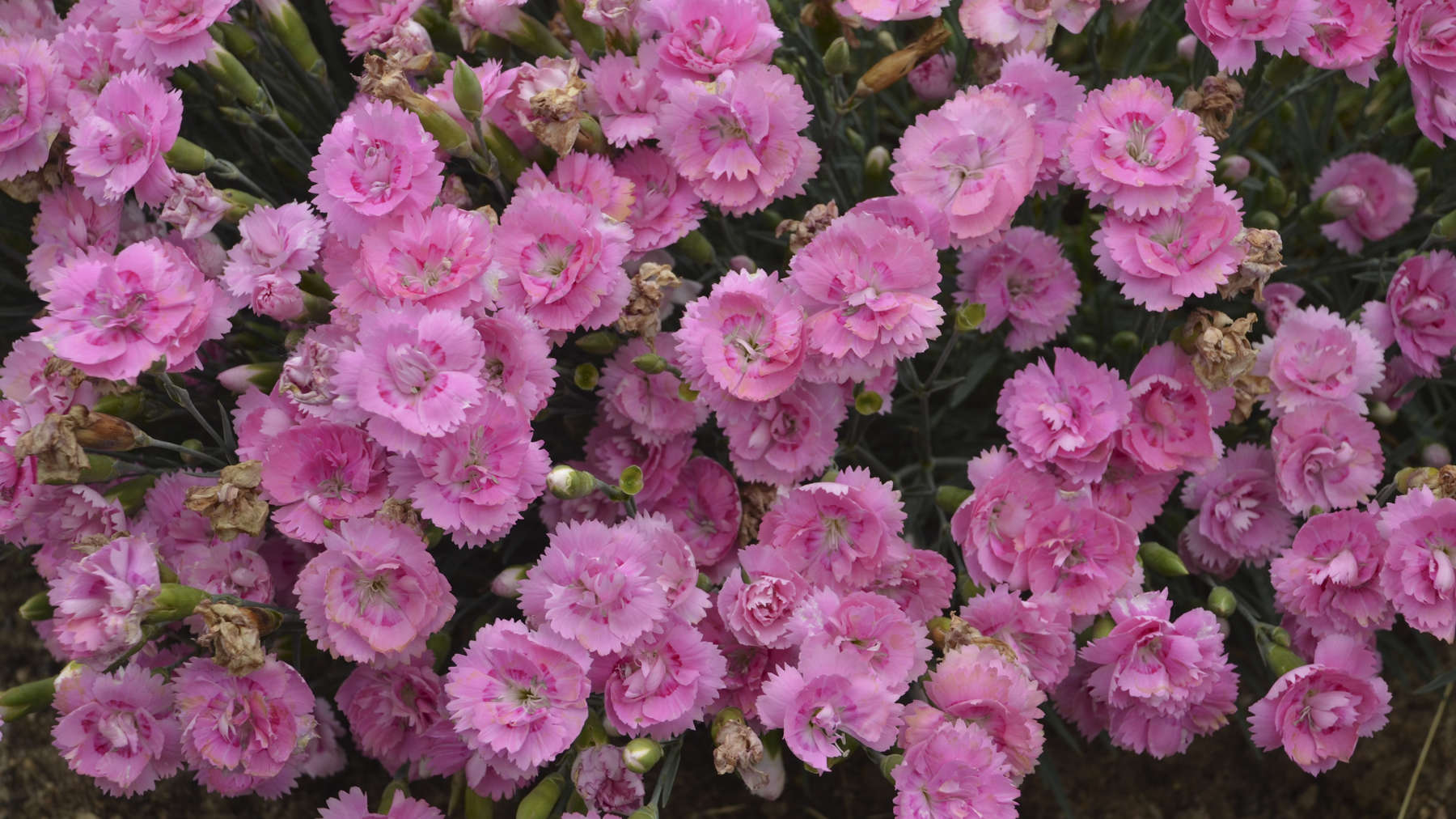Dianthus 'Spiked Punch' PP28635 CPBR5817
FRUIT PUNCH® Series


Common Name: Pinks
Incredibly vibrant fuchsia pink, double flowers have deep red eyes and heavily serrated petals. The flowers are a little larger than most of the other members of the series at 1½-2" across. Steel blue foliage complements the bright flower color well and remains a focal point even when the plant is not in bloom.
Members of the Dianthus FRUIT PUNCH® series share the following traits: semi to fully double, fragrant flowers, and good heat and humidity tolerance. Flowers appear in early summer, and a quick shearing after flowering will encourage them to rebloom in early fall. FRUIT PUNCH® Dianthus are just the right size to edge the front of the sunny border and use in combination containers.
In the carnation family, Dianthus cultivars deliver gorgeous single, semi-double, and fully double flowers. Singles tend to deliver more flowers while doubles are significantly larger, sometimes more than twice the size. Singles also tend to grow quicker and can appear like a carpet in the landscape at maturity.
*The FRUIT PUNCH® trademark is owned by Walters Gardens, Inc.
128ct Plug Tray |
30ct Plug Tray |
72ct Plug Tray |
